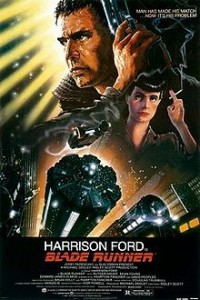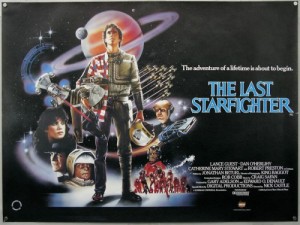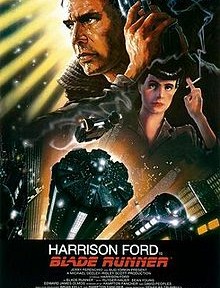So here am back at my irregular series on the most influential SF films, by decade. The 1980s are a particularly target rich environment for discussing SF and genre movies. After the explosive popularity of Star Wars in the 70’s, a popularity that followed through into the 80s with The Empire Strikes Back and The Return Of The Jedi, studios turned to genre film as the path to the next mega-blockbuster. The decade so film that had big budgets with full studio backing, and small Indy movies that challenged the big boys at the box-office. So picking just two and the most influential is a daunting task.
Neither film that I selected were major hits at the box office, but their impacts far out reached the lack luster initial performances.
 Blade Runner (1982): A dark, film noir SF movie from master filmmaker Ridley Scott, Blade is a rather loose adaptation of Philip K. Dick’s stranger and thought provoking novel, Do Androids Dream of electric Sheep? The film cratered at the box office, when audiences were in the mood for light escapist fare, and had already been conditioned to accept Harrison Ford as an ‘action hero’ this psychological detective story about the qualities of humanity, love, and compassion, found itself serious out of step with the times. However the filmmaking was revolutionary. The look, feel, and future presented in Blade Runner inspired filmmakers for decades. Christopher Nolan is said to have used it as a touch stone for the look at ‘Batman Begins.’ Later it gained a cult following, and eventually critics noticed the serious thought and themes running through the film, but almost from the start filmmakers fell in love with it and copied it. Now regarded as a classic, and one that prompt endless debates about preferred versions , endings, and character natures, Blade Runner is a film that has stood the test of time.
Blade Runner (1982): A dark, film noir SF movie from master filmmaker Ridley Scott, Blade is a rather loose adaptation of Philip K. Dick’s stranger and thought provoking novel, Do Androids Dream of electric Sheep? The film cratered at the box office, when audiences were in the mood for light escapist fare, and had already been conditioned to accept Harrison Ford as an ‘action hero’ this psychological detective story about the qualities of humanity, love, and compassion, found itself serious out of step with the times. However the filmmaking was revolutionary. The look, feel, and future presented in Blade Runner inspired filmmakers for decades. Christopher Nolan is said to have used it as a touch stone for the look at ‘Batman Begins.’ Later it gained a cult following, and eventually critics noticed the serious thought and themes running through the film, but almost from the start filmmakers fell in love with it and copied it. Now regarded as a classic, and one that prompt endless debates about preferred versions , endings, and character natures, Blade Runner is a film that has stood the test of time.
 The Last Starfighter (1984): Star Wars produced a glut of young men leaving home and becoming heroes in the vastness of space stories, and while this one is quirky, fun, and has some tremendous performances, overall the story is not that ground breaking. What marks The Last Starfighter as the innovative and formative movie that it is comes from its production. This was the first film to attempt and utilize photorealistic computer generated imagery for nearly all of the special effects produced in the movie. Star Trek II: The Wrath of Khan broke ground with the CGI of the Genesis effect, impressive work that holds up to this day, but it was less than a minute of screen-time while the rest of the film used traditional model photography to achieve the shots of dueling starships. The Last Starfighter has no miniatures or models, all the starships exist solely as CGI imagery. While that CGI is painfully dated by todays standards, it is hugely important in the history of film. It proved that it could be done and that audiences would accept the effects. From there we lead into Babylon 5, Jurassic Park, and every genre film made today. They are all building up in the work done in this film.
The Last Starfighter (1984): Star Wars produced a glut of young men leaving home and becoming heroes in the vastness of space stories, and while this one is quirky, fun, and has some tremendous performances, overall the story is not that ground breaking. What marks The Last Starfighter as the innovative and formative movie that it is comes from its production. This was the first film to attempt and utilize photorealistic computer generated imagery for nearly all of the special effects produced in the movie. Star Trek II: The Wrath of Khan broke ground with the CGI of the Genesis effect, impressive work that holds up to this day, but it was less than a minute of screen-time while the rest of the film used traditional model photography to achieve the shots of dueling starships. The Last Starfighter has no miniatures or models, all the starships exist solely as CGI imagery. While that CGI is painfully dated by todays standards, it is hugely important in the history of film. It proved that it could be done and that audiences would accept the effects. From there we lead into Babylon 5, Jurassic Park, and every genre film made today. They are all building up in the work done in this film.

